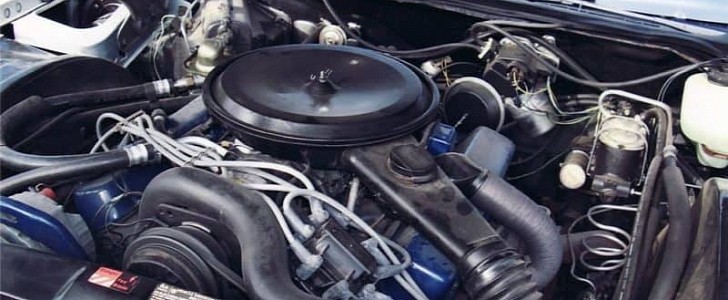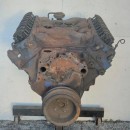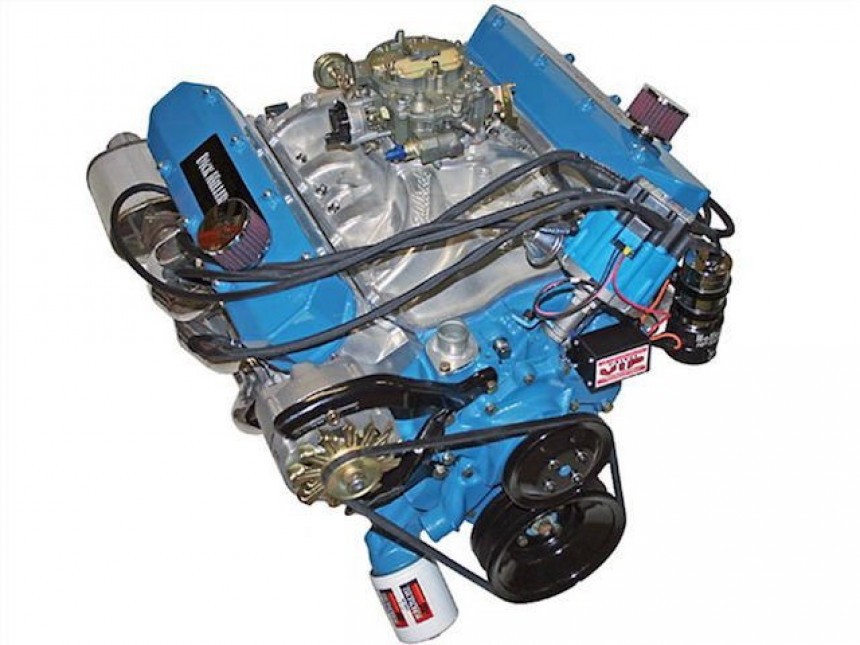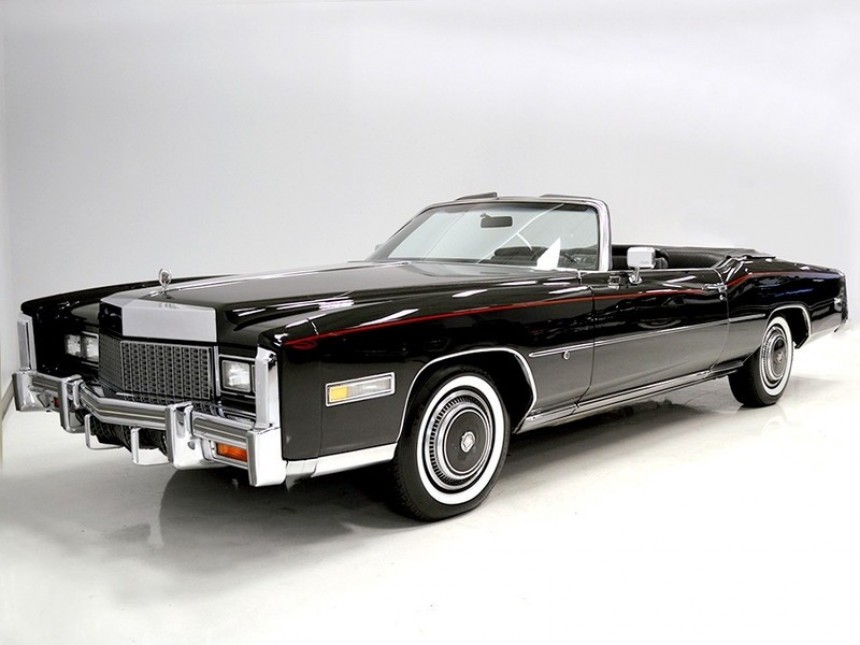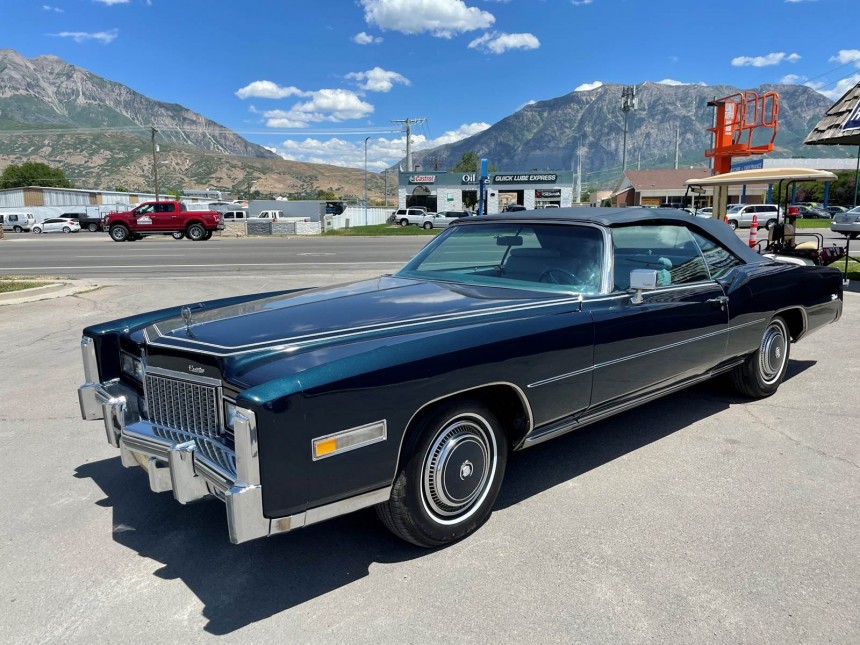Even by the standards of the late 1960s, nobody really needed a V8 engine with 500 cubic inches (8.2-liters) of displacement, 600 lbs (272.1 kg) of dry weight (without the accesories), and 400-plus gross horsepower as their daily driver. But back in those days, you didn't buy a Cadillac based on what you needed, but what you wanted. Or even further, what you demanded.
If you'd made your way up the American corporate ladder in the late 1960s, your reward was this engine and a hell of a car built around it. This is the story of the Cadillac 500 V8, an engine that didn't need to exist. But oh heaven above, are we thankful that it does. It's the most noteworthy V8 in a line of Cadillac engines that defined the brand for over a century.
Indeed, Cadillacs and V8 engines go back to the pioneer days of the American automotive sector as we would identify it. The first Type 51 L-Head (side-valve) V8 made its way onto Cadillac luxury cars in 1914. By the next year, the engine was all but standard on all Cadillac models. This original Cadillac V8 measured 314- cubic inches (5.1 L) and produced in the neighborhood of 70 horsepower.
You better believe the Cadillac V8 wouldn't stay that small for much longer. The next six decades of Cadillac V8 engine development would see the platform add new internals while also exponentially increasing displacement, jumping in increments from 331-cubic inches (5.42-liters) to 365 (5.98-liters) before reaching truly oversized status with the 390-cubic inch (6.4-liter) V8 beginning with the 1963 model year.
By this juncture, a Cadillac 390 V8 produced 325 hp and 430 lb-ft (583 N⋅m) of torque. A figure that, if we could travel back in time and ask their owner's opinions of them, would likely call mighty satisfying. But these were the earliest days of the first American muscle car renaissance. Surely, that wouldn't satisfy the horsepower itch for much longer.
This was especially true when Chrysler's new 440-cubic inch (7.2-liter) V8 and Lincoln's 460-cubic inch (7.42-liter) V8 made the 390 Cadillac V8 look small. Sure enough, this relentless lust for more power and bigger engines gave rise to the 500 V8's direct predecessor, the 472-cubic inch Cadillac V8, in 1968. Internally, there wasn't all that much difference between a Cadilac 472 V8 and the mack-daddy 500 big boy.
With a bore of 4.3 in (109.2mm) and a stroke of 4.06 in (103.1 mm) in the Cadillac 472 V8, the engine jetted a recorded 375 SAE gross horsepower and a scarcely believable 525 lb-ft (712 N⋅m) of torque at 3,000 rpm. That's modern-day medium-duty pickup levels of grunt from an engine meant to ferry businesspeople and their families around in abject luxury.
In fact, the 472 V8 was built with internals expressly designed to accommodate larger engine components later on to finally bring the Cadillac V8 across the 500-cubic inch barrier. As if it were just as important as breaking the sound barrier back in the day. For fans of American cars of the day, it really was that important. In 1970, Cadillac further modified the base 472 V8, adding a crankshaft with a 4.304 in (109.3 mm) stroke to officially crack 500-cubic inches (8.2-liters).
In the immediate years before the first great American fuel crisis of 1973, the Cadillac 500 V8 was the cream of the crop for American luxury car engines. While flashier small-block V8s permeated GMs sporty muscle car lineup between Chevy, Buick, Pontiac, and Oldsmobile, Cadillac's approach was altogether different while using the same guiding philosophy of no replacement for displacement.
From inception until 1975, the 500 V8 was reserved for a single Cadillac Model, the Eldorado. As the flagship vehicle of the Cadillac lineup, the Eldorado got the most out of the 400 hp gross hp and 550 lb-ft (746 N⋅m) of torque the 500 V8 had to offer. With polished wood, supple leather, and the best ride this side of a Rolls-Royce, the early 70s was the last time an American luxury car rivaled the quality of European offerings like Bentley and Mercedes-Benz for decades.
By 1976, the 500 V8 was available across Cadillac's range of vehicles apart from Seville. But by this stage, the gargantuan engine was a shell of its former self. With a switch from gross to net horsepower in the early 70s followed by strict emissions restrictions soon after, 190 to 210 horsepower was all the engine could muster in its final iterations in 1976.
Compared to half a century or more of dominance the likes GM 350 small-block from the same parent company, the halo engine for Cadillac had a comparatively paltry production run. From then on, American no passenger car engine would ever again come even close to the cubic displacement the 500 Caddy was playing around with.
In many ways, Cadillac wouldn't again lay claim to a critically acclaimed flagship V8 for decades after the 500 went bust. Even the venerable Northstar V8 of the 90s and 2000s, as lovely as it may have been with all the bugs worked out, was too unreliable in its early iterations to truly hold that title. The 2010s weren't any better because in that period because Caddy spent that time using admittedly brilliant but not all that novel LS engines.
It wasn't until 2018 that the bewitchingly wonderful Blackwing V8 gave Caddy a world-class engine all its own, and even that got canceled after two years. Pitty.
Indeed, Cadillacs and V8 engines go back to the pioneer days of the American automotive sector as we would identify it. The first Type 51 L-Head (side-valve) V8 made its way onto Cadillac luxury cars in 1914. By the next year, the engine was all but standard on all Cadillac models. This original Cadillac V8 measured 314- cubic inches (5.1 L) and produced in the neighborhood of 70 horsepower.
You better believe the Cadillac V8 wouldn't stay that small for much longer. The next six decades of Cadillac V8 engine development would see the platform add new internals while also exponentially increasing displacement, jumping in increments from 331-cubic inches (5.42-liters) to 365 (5.98-liters) before reaching truly oversized status with the 390-cubic inch (6.4-liter) V8 beginning with the 1963 model year.
By this juncture, a Cadillac 390 V8 produced 325 hp and 430 lb-ft (583 N⋅m) of torque. A figure that, if we could travel back in time and ask their owner's opinions of them, would likely call mighty satisfying. But these were the earliest days of the first American muscle car renaissance. Surely, that wouldn't satisfy the horsepower itch for much longer.
With a bore of 4.3 in (109.2mm) and a stroke of 4.06 in (103.1 mm) in the Cadillac 472 V8, the engine jetted a recorded 375 SAE gross horsepower and a scarcely believable 525 lb-ft (712 N⋅m) of torque at 3,000 rpm. That's modern-day medium-duty pickup levels of grunt from an engine meant to ferry businesspeople and their families around in abject luxury.
In fact, the 472 V8 was built with internals expressly designed to accommodate larger engine components later on to finally bring the Cadillac V8 across the 500-cubic inch barrier. As if it were just as important as breaking the sound barrier back in the day. For fans of American cars of the day, it really was that important. In 1970, Cadillac further modified the base 472 V8, adding a crankshaft with a 4.304 in (109.3 mm) stroke to officially crack 500-cubic inches (8.2-liters).
In the immediate years before the first great American fuel crisis of 1973, the Cadillac 500 V8 was the cream of the crop for American luxury car engines. While flashier small-block V8s permeated GMs sporty muscle car lineup between Chevy, Buick, Pontiac, and Oldsmobile, Cadillac's approach was altogether different while using the same guiding philosophy of no replacement for displacement.
By 1976, the 500 V8 was available across Cadillac's range of vehicles apart from Seville. But by this stage, the gargantuan engine was a shell of its former self. With a switch from gross to net horsepower in the early 70s followed by strict emissions restrictions soon after, 190 to 210 horsepower was all the engine could muster in its final iterations in 1976.
Compared to half a century or more of dominance the likes GM 350 small-block from the same parent company, the halo engine for Cadillac had a comparatively paltry production run. From then on, American no passenger car engine would ever again come even close to the cubic displacement the 500 Caddy was playing around with.
In many ways, Cadillac wouldn't again lay claim to a critically acclaimed flagship V8 for decades after the 500 went bust. Even the venerable Northstar V8 of the 90s and 2000s, as lovely as it may have been with all the bugs worked out, was too unreliable in its early iterations to truly hold that title. The 2010s weren't any better because in that period because Caddy spent that time using admittedly brilliant but not all that novel LS engines.
